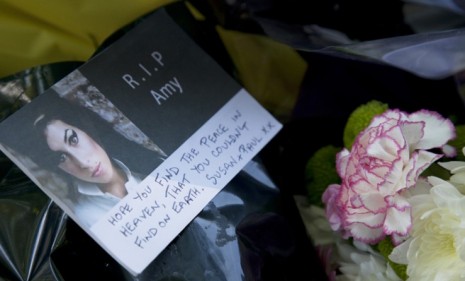Amy Winehouse: Did she die of alcohol withdrawal?
The famous singer may have tried to quit alcohol by going cold turkey, a bad idea for many alcoholics

While the world waits for final toxicology results from Amy Winehouse's death, rumors swirl about what killed the famous singer. Sources close to her family now say it wasn't drugs or alcohol that killed the 27-year-old, but, ironically, withdrawal from alcohol. "The singer's decision to lay off alcohol completely for three weeks was a lethal 'shock' for her tiny body," says Lia Nicholls in the Sun. Could that really be what caused Winehouse's death? Here, a brief guide:
Is alcohol withdrawal a real condition?
Yes, though it's not often seen, even among lifelong alcoholics. Severe alcohol withdrawal is considered "rare, since so few alcoholics ever experience withdrawal," says Maia Szalavitz in TIME. "They either do not succeed, or even attempt, quitting alcohol cold turkey."
The Week
Escape your echo chamber. Get the facts behind the news, plus analysis from multiple perspectives.

Sign up for The Week's Free Newsletters
From our morning news briefing to a weekly Good News Newsletter, get the best of The Week delivered directly to your inbox.
From our morning news briefing to a weekly Good News Newsletter, get the best of The Week delivered directly to your inbox.
What does alcohol withdrawal look like?
Symptoms vary from person to person, but it can be a serious condition. People who drink heavily and quit suddenly, says Dr. Sam Zakhari, as quoted in The Boston Globe, may experience "symptoms ranging from anxiety to tremors to full-blown seizures and delusions." In severe cases, alcohol withdrawal can result in delirium tremens.
What is delirium tremens?
"The D.T.s," as the condition is sometimes called, usually show up three to five days after a person quits alcohol cold turkey. Delirium tremens is characterized "by severe agitation, major confusion, hallucinations, and a high fever, and it can lead seizures, stroke, or heart attacks," says Kate Torgovnick at The Frisky. The condition requires immediate medical attention.
A free daily email with the biggest news stories of the day – and the best features from TheWeek.com
Can you die from alcohol withdrawal?
It's certainly possible, though again, it happens rarely. Proper treatment of alcoholism usually consists of replacing the alcohol with benzodiazepine drugs, which calm the brain by acting on its neurotransmitters. These drugs are then slowly tapered off. This kind of treatment prevents the shock that can lead to seizures. According to some reports, Winehouse "died after ignoring her doctor's advice to cut down on her heavy drinking gradually."
Sources: Boston Globe, Frisky, Sun, TIME
-
 Farage’s £9m windfall: will it smooth his path to power?
Farage’s £9m windfall: will it smooth his path to power?In Depth The record donation has come amidst rumours of collaboration with the Conservatives and allegations of racism in Farage's school days
-
 The issue dividing Israel: ultra-Orthodox draft dodgers
The issue dividing Israel: ultra-Orthodox draft dodgersIn the Spotlight A new bill has solidified the community’s ‘draft evasion’ stance, with this issue becoming the country’s ‘greatest internal security threat’
-
 Sudoku hard: December 13, 2025
Sudoku hard: December 13, 2025The daily hard sudoku puzzle from The Week